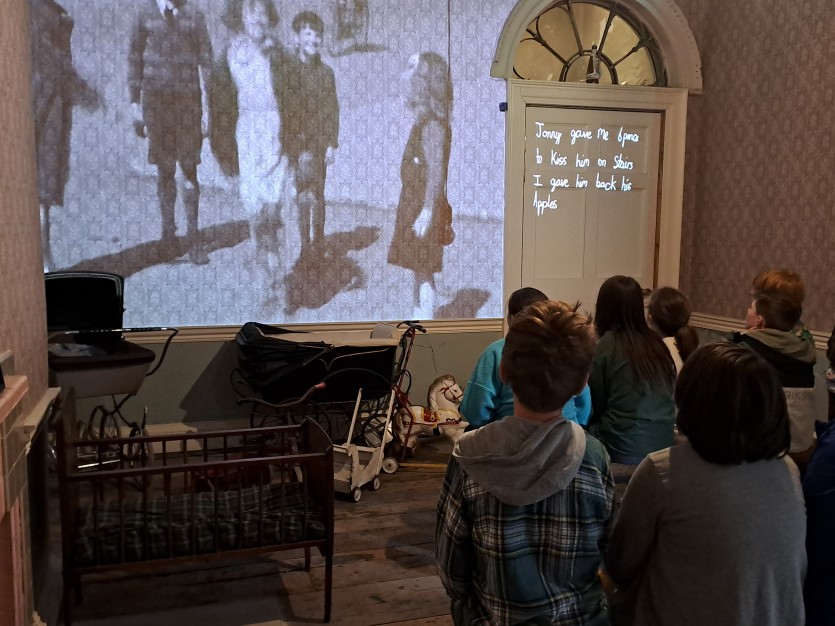How we work: Education at 14 Henrietta Street
StoriesPublished 22 July 2024

This article is written by Dervilia Roche, Education Manager for 14 Henrietta Street.
The Education Policy for 14 Henrietta Street outlines the many ways that we engage with people at the museum, as well as the aims and objectives of this engagement.
‘Education’ in a museum context can mean different things in different museums, sometimes meaning only activities and resources for school groups, but more often meaning the wide variety of ways a museum is made accessible and engaging for all types of visitors. This can include developing events, activities, resources, and more, to provide people with different ways that they can interact with a museum’s collections.
Traditionally, museum education has tended to be an ‘add-on’ in many museums, in that these activities are generally developed only after the exhibitions have been created. At 14 Henrietta Street however, education has been embedded into everything since the development of the museum. We have developed an infrastructure that puts people at the centre of our work.
Much of this has happened through the way our core exhibition and guided tour offerings are drawn from oral histories gathered through engaging with former tenement residents, particularly from our Your Tenement Memories programme. Each of our added activities (for example, talks, family workshops, and more) have been developed through listening and responding, always putting people at the centre of the work.
The many activities of 14 Henrietta Street provide a wide range of opportunities for different people to engage with the stories and history of the house before, during and after a visit. They can be linked to the three overall aims of the museum: to share, engage and discover.
Share:
We tell stories. We retell the story of the lives of the people of 14 Henrietta Street. Some of the ways we do this include through our core activity, which is the guided tour of the building. Other examples include our teacher resources that can be used in the classroom to learn more about the building before or after a visit, our Teatime Talks (a series of talks inspired by the history and people of 14 Henrietta Street), a programme of activities for families and children, and our Making a Museum video series available to watch online.
Engage:
We make connections. By listening and talking, we make connections with visitors, citizens, historians, local residents, former residents and their families. One example of this includes our annual Neighbours Day for up to 300 of our neighbours, when they can drop in to the museum, chat to staff and guides, and avail of a free guided tour. We also make new connections in other ways, through participating in external festivals, and through reaching out to new schools.
Discover:
We uncover history. We continue to research the house and its occupants and continue to learn from the memories and knowledge of others. A key part of this is our ongoing Your Tenement Memories programme, where we collect and record oral histories relating to tenement life in Dublin, and create ways to integrate these memories into the activities of the building.
Our Education Policy outlines each of these aims, along with our action plan of activities each year. Because of the wide range of activities, they involve input from staff working in all areas of the museum and across several departments of Dublin City Council Culture Company.
It is an ongoing process, and we continually record our work and methods to evaluate our outcomes and inform our future work. The policy has also formed a part of our application to the Museum Standards Programme for Ireland.
Our Education mission statement:
By putting people at the centre of the work of the museum, education is embedded into everything at 14 Henrietta Street. We provide a range of opportunities for different audiences to engage with the stories of the house before, during and after a visit. These opportunities will continue to be added to, by listening and talking with visitors, historians, local residents and their families.
 ShopBook Now
ShopBook Now